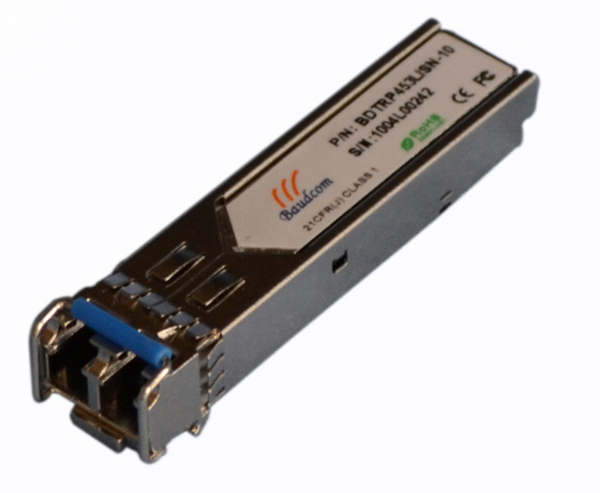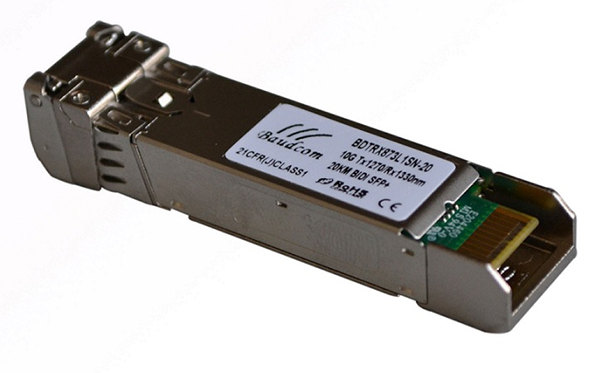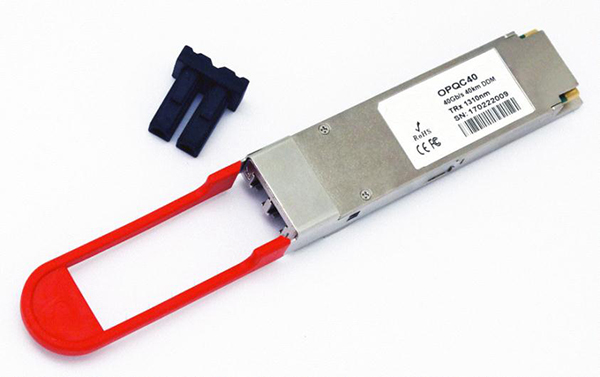Nowadays, there are many specifications of fiber optic transceivers
available in the market, such as SFP, SFP+, and QSFP and so on. So how do you
choose between them? This article will introduce their differences to you.
What is SFP?
SFP stands for Small Form-factor Pluggable. It is also usually
called mini-GBIC (Gigabit Interface Converter). It is a compact, hot swappable
transceiver designed to support 100/1000Mbps Ethernet, Fibre Channel, SONET and other communication standards. SFP is
suitable for copper cables or optical fibers, supports speeds up to 4.25Gbps,
and is commonly used in telecommunications and data communication applications.

1.25G SFP Optical Module
What is SFP+?
SFP+ stands for Enhanced Small Form-factor Pluggable and
is an enhanced version of SFP. SFP+ supports 8 Gbit/s Fibre Channel, 10 Gbit
Ethernet and optical transmission network standard OTU2, and supports data
rates up to 16 Gbit/s. It is a popular industry format supported by many
network component vendors.

10G Bi-Directional SFP+ Optical Transceiver
What is QSFP?
QSFP stands for Quad Small Form-factor Pluggable. It is a compact,
hot-swappable fiber optic transceiver for 40 Gigabit Ethernet data
communication applications. Network administrators are now migrating to 40G,
and QSFP transceivers are an important component to ensure high-speed Internet.

40 GB/s 40km QSFP+ Transceiver
Difference between SFP, SFP+, QSFP
The size and appearance of SFP and SFP+ transceivers are almost the
same. The main difference is that SFP+ is an updated version. SFP usually
supports 1.25 Gbit/s to 4.25 Gbit/s, while SFP+ supports data rates up to 10
Gbit/s. The specification of SFP+ is
based on SFF-8431, and SFP is based on the standards of IEEE802.3 and SFF-8472.
SFP+ transceiver cannot be inserted into the SFP port, otherwise the product or
port will be damaged.
40G QSFP optical module can provide four transmission channels, and the
data rate of each channel is 10Gbps. Compared with SFP+ optical modules, QSFP
modules can increase port density by four times.
Conclusion
There are different types of SFP transceivers, depending on their
purpose. After you have a clear understanding of them, you must also consider
your network traffic, transmission distance, and network requirements to ensure
the correct choice.
Baudcom offers all types of fiber optic transceivers. For more information, please visit Baudcom.
Updated article: What is QSFP? A Complete Guide 2025
Top 5 Most Common Fiber Optic Transceiver Types Used in 2025